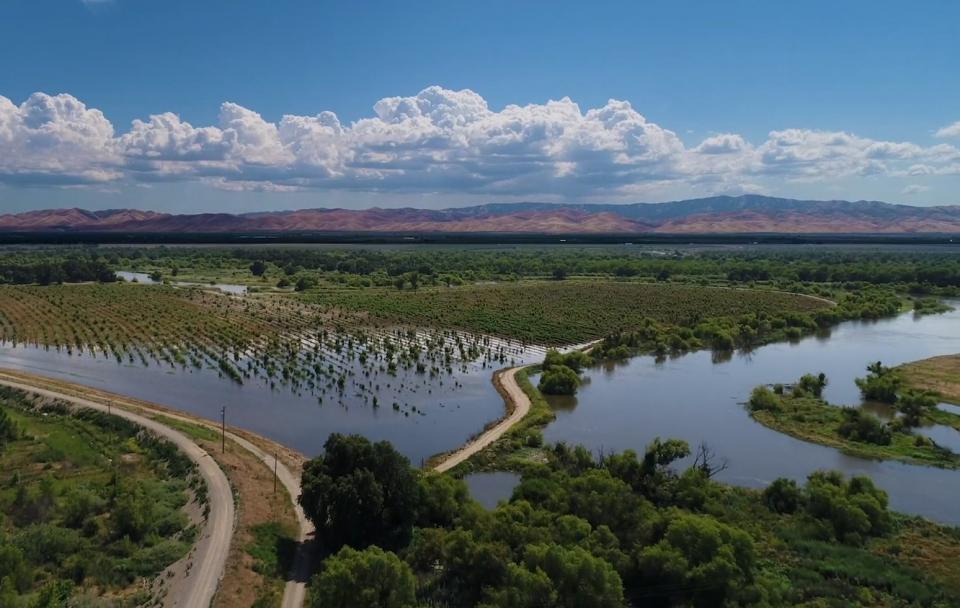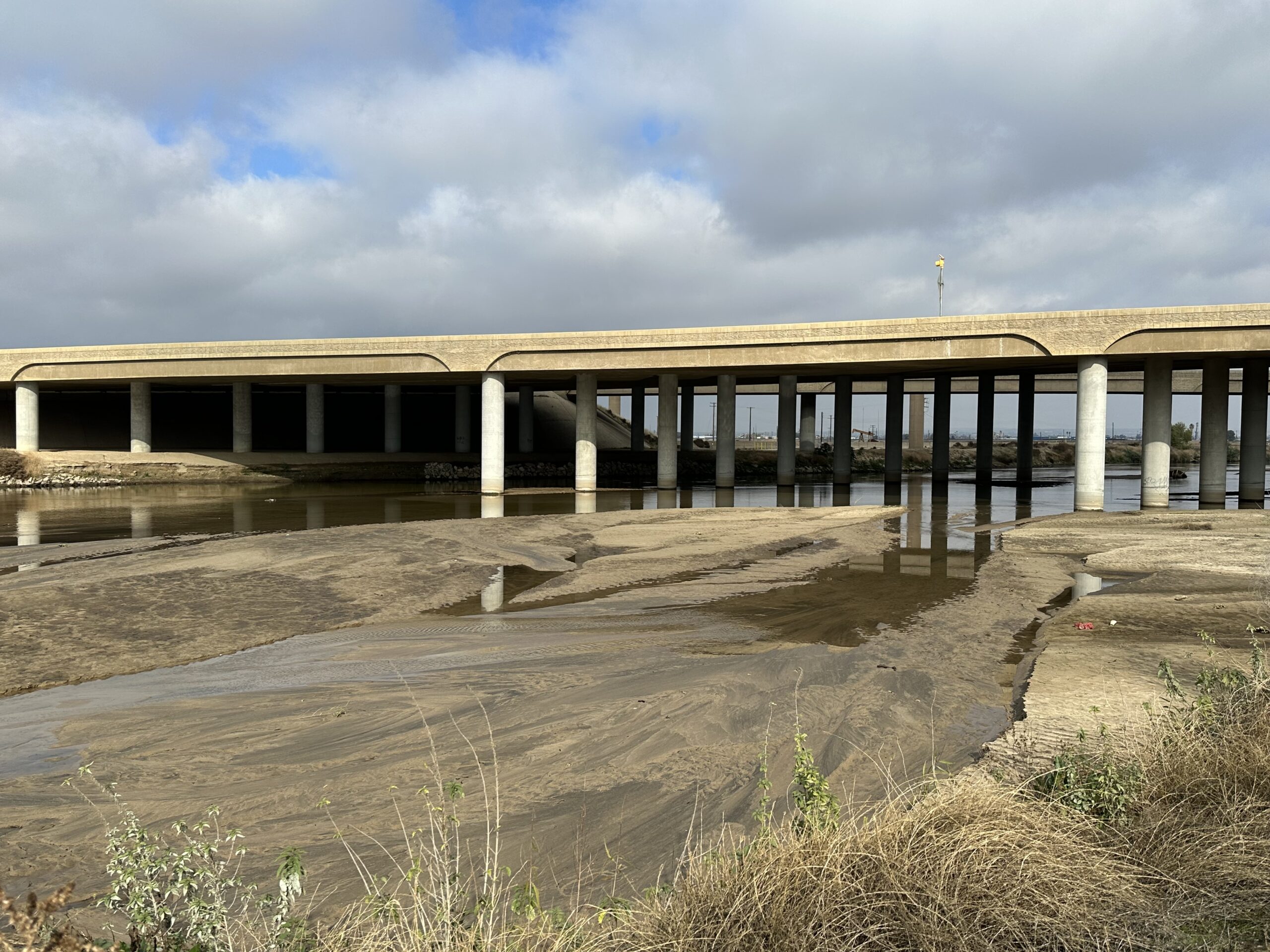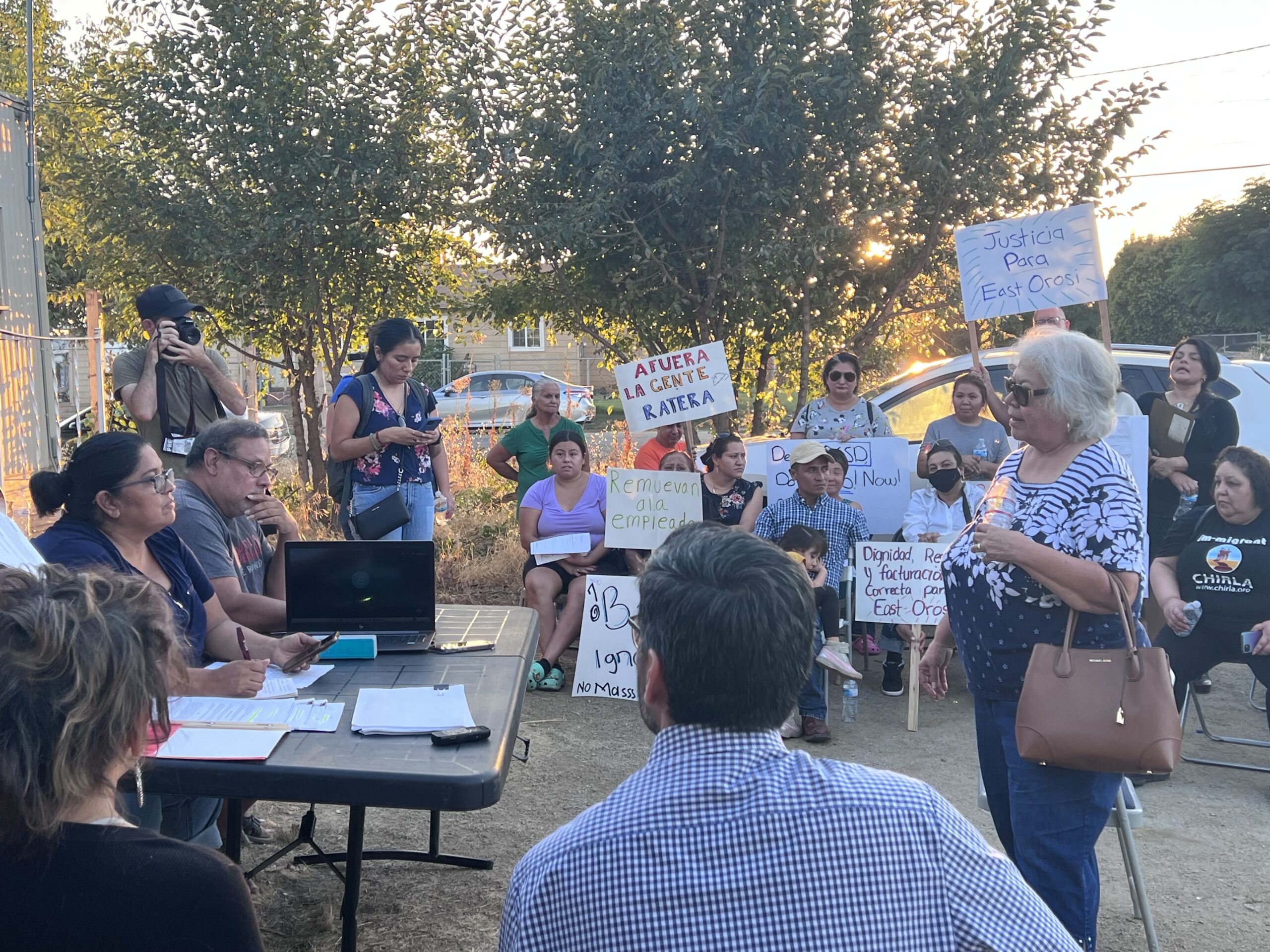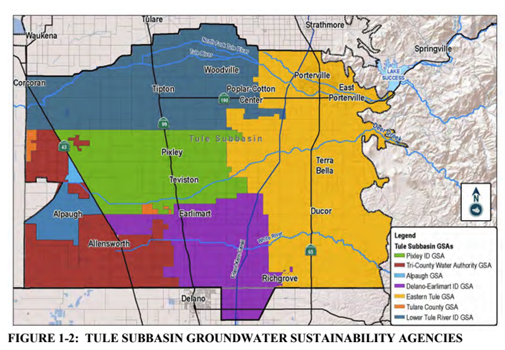One of the surest ways to corral flooding on the valley floor is floodplain restoration – letting rivers spread out over large swaths of undeveloped land to slow their flow and absorb the water.
But even as cities and farms throughout the southern San Joaquin Valley brace for more flooding from an epic snowmelt after already enduring massive flooding from heavy storms earlier this year, floodplain restoration remains a “foreign concept” in the south valley.
That said, Dan Vink, chair of the Tulare County Flood Commission said there is great potential for floodplain restoration in the south valley and it’s beyond time that locals start considering such projects. When it comes to this type of work, there’s a steep learning curve in the south valley, he said.
Vink is also the executive director of the Tule Basin Land & Water Conservation Trust, an organization working to restore and conserve land in the south valley. Some of its projects include restoring natural habitat, repurposing agricultural lands and building wildlife friendly groundwater recharge basins. But the organization hasn’t taken on any floodplain projects and Vink doesn’t know of any happening south of Fresno.
One south San Joaquin project that had been in the works on the Kern River, had its funding yanked out from under it earlier this year by the Newsom administration.
That money, $40 million for eight different projects, has been put back in Governor Newsom’s proposed budget. But other than the Kern project, most of those projects would be along rivers in the north valley.
The state hasn’t invested much for long term projects in the south valley in many years, agreed Jack Mitchell, head of the Deer Creek Storm Water District in Tulare County.
And when it comes to Tulare Lake, which is rapidly refilling and threatening the towns of Corcoran and Stratford, there’s not much anyone can do. That’s all private land, said Mitchell.
“It’s not being controlled by the state, the landowners have total control over it,” said Mitchell. “For people living around the edges, they don’t know what’s going to happen.”
Part of the reason the south valley hasn’t seen more floodplain restoration is because the region is not included under the state’s Central Valley Flood Protection Plan, said Karla Nemeth, director of the state Department of Water Resources, in a media briefing.
“A lot of the work that we’re doing from a flood planning perspective gets focused on those communities that are participating in this Central Valley Flood Protection Plan,” said Nemeth. For communities left out of the plan, there is a lack of information, she said.
There is significant flood response funding headed to the south valley now because of the ongoing emergency, said Nemeth.
But it would be good for south valley communities to be part of the plan, she added.
“I think the benefits to the Tulare basin of being part of the flood protection plan are significant and only going to get more important over time just given the intensity of storms that we anticipate coming,” she said.
In the meantime, the $40 million that was added back to the proposed state budget for valley floodplain restoration will be mostly focused further north around the San Joaquin River primary floodplain and some of its tributaries.
If the money is approved, nonprofit River Partners will act as the lead agency, said Julie Rentner, president of River Partners. There are dozens of partner organizations and collaborators that would use the funding, she said.
Some of the money would go toward buying flood-prone properties that are currently disconnected from floodplains, said Rentner. Those properties would then be converted and restored to flood naturally. Rentner estimates there will be about 1,400 acres of affected primary floodplains.
“We’re hoping that the budget finalization process happens on schedule in June, July this year,” said Rentner. “We’re hopeful that we’ll be acquiring land before the end of 2023.”
Share this:
- Click to share on Facebook (Opens in new window)
- Click to share on Twitter (Opens in new window)
- Click to share on LinkedIn (Opens in new window)
- Click to share on Reddit (Opens in new window)
- Click to share on Tumblr (Opens in new window)
- Click to share on Pinterest (Opens in new window)
- Click to share on Pocket (Opens in new window)
- Click to share on Telegram (Opens in new window)
- Click to share on WhatsApp (Opens in new window)
- Click to print (Opens in new window)








